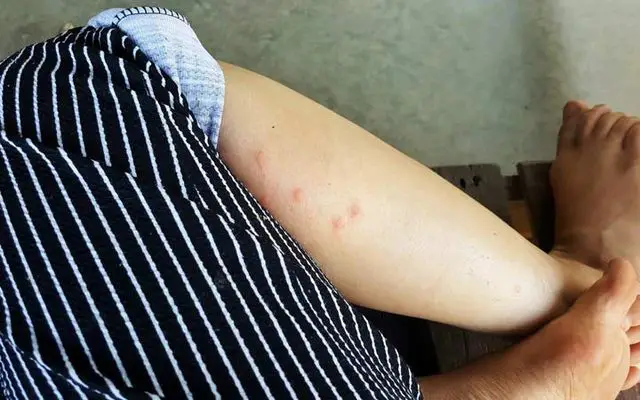Is Vaseline Good For Wax Burns?
What are wax burns?
Wax burns are skin injuries caused by exposure to hot wax, typically during candle-making, waxing hair removal, or other activities involving melted wax. They occur when the high temperatures of liquid or melted wax make direct contact with the skin, scalding the skin’s surface.
Wax itself has a melting point of around 150–170°F. However, melted wax is often heated to much higher temperatures before application in hair removal or candle production. This means the wax can reach temperatures hot enough to burn skin on contact.
Wax burns are most common on areas of the body exposed during waxing procedures, like the legs, face, underarms, and bikini area. Hands and fingers are also prone to wax burns during candle-making or other crafts using melted wax. The hot wax can splash onto the skin and quickly cause pain, redness, swelling, and damage.
How dangerous are wax burns?
Wax burns are usually first or second degree burns that affect the top layers of skin (1). They can be serious if a large area is affected. Wax burns cause pain, blistering, peeling, and raw, irritated skin in the affected area (2).
First degree wax burns only affect the top layer of skin, causing redness and pain. Second degree burns go deeper, damaging both the outer and underlying layer of skin which creates blisters (3).
While wax burns are generally minor, they can become dangerous if not properly treated. Severe wax burns that cover a large surface area can cause serious complications like infection, scarring, and pigmentation changes (1). Seek medical attention for burns that blister or affect sensitive areas like the face, hands, feet or genitals.
Sources:
(1) https://www.healthline.com/health/beauty-skin-care/waxing-burn
(2) https://www.sknclinics.co.uk/blog/treating-a-wax-burn
(3) https://cambridgelaserclinic.com/treating-wax-burns-the-right-way/
First aid for wax burns
If you experience a wax burn, it’s important to take immediate action to soothe the irritation and prevent infection. According to Healthline, the first step is to cool the burn by holding the area under cool, running water for 10-15 minutes or submerging the area in cool water for up to 20 minutes.
Next, be sure to gently remove any jewelry or clothing touching the burned area, taking care not to peel off any skin. According to Skn Clinics, you’ll want to avoid using ice, as extreme cold can damage the skin.
After cooling, apply a layer of pure aloe vera gel to the burn. Studies show aloe vera has anti-inflammatory and healing properties that can ease pain and promote healing for minor burns. It’s best to use a product that is 100% pure aloe vera with no added chemicals. Reapply the gel several times a day. According to Cambridge Laser Clinic, aloe vera can aid healing and reduce the risk of scarring.
You can also take an over-the-counter pain reliever like ibuprofen to ease discomfort. Just be sure to avoid applying any creams, butter or oil to the burn, as these can trap heat and worsen skin damage.
Should you use Vaseline for wax burns?
Vaseline, also known as petroleum jelly, is commonly used for minor burns and wounds. Some people recommend using it for wax burns to help remove any remaining wax on the skin. However, most doctors and medical sources do not recommend using Vaseline for wax burns for a few key reasons:

Vaseline can trap heat and irritate the burn. Since wax burns often feel hot and inflamed, Vaseline may exacerbate this by preventing heat from escaping the wound. This can worsen inflammation and pain.
Doctors caution that petroleum jelly is very difficult to fully remove later. Any Vaseline left on a wax burn makes it challenging for doctors to properly clean, disinfect, and treat the wound if needed. The waxy residue can also trap bacteria and lead to infection.
Medical sources like the Mayo Clinic recommend allowing wax burns to cool, then gently washing with soap and water. Using a soft washcloth, they advise gently patting the area instead of scrubbing. Aloe vera gel and hydrocortisone cream can help soothe pain and inflammation. See a doctor for severe wax burns.
Better home treatments
While Vaseline can provide some relief for mild wax burns, there are better home treatment options for more severe burns. Some of the most effective options include:
Aloe vera gel – Pure aloe vera gel can provide cooling and soothing relief while also helping promote healing. It contains antioxidants and enzymes that fight inflammation and reduce pain.[1]
Hydrogel dressings – These gel-infused bandages help cool the burn area while also keeping it moist to speed healing. They provide a protective barrier against infection.[2]
Antibiotic ointment – Applying an ointment like Neosporin can prevent bacterial infection in the burn area while also keeping it moisturized as it heals.[3]
Over-the-counter burn cream – Specifically formulated creams with ingredients like lidocaine, aloe, and vitamin E can relieve pain, itching, and inflammation caused by wax burns.
Using one of these evidence-based home treatments can promote faster healing for wax burns while reducing pain, inflammation, and risk of complications.
When to see a doctor
Most minor wax burns will heal on their own with proper first aid and aftercare, but you should see a doctor if the burn covers a large area, shows signs of infection, or causes severe persistent pain. According to Healthline, you should see a doctor if:
- The burn covers a large surface area of your body
- You see signs of infection like oozing, increasing redness/swelling, streaks, pus, foul odor, fever
- The pain is excruciating and does not get better with OTC medication
- The burn is not showing signs of healing after 2 weeks
As per Skn Clinics, burns that do not heal within 10-14 days may require medical intervention. Severe burns often result in blisters and may cause scarring if not properly treated. Seeking timely medical care can help minimize the risk of complications and permanent skin damage.
If you experience a wax burn on delicate areas like the face, doctors can provide appropriate treatment to reduce scarring. They may prescribe antibiotic ointments, silicone gel sheets, or skin needling procedures if the burns have resulted in scars. Getting prompt medical attention improves healing outcomes.
Medical treatments
For more serious wax burns, medical treatment may be required. Doctors have several options for treating wax burns:
Debridement of blisters – If large blisters have formed, the doctor may puncture and drain the fluid from them. This helps prevent infection. The dead skin of the blister may also be removed (debrided) to allow new skin to grow. According to sknclinics.co.uk, debriding the blister can promote faster healing.
Prescription burn cream – Prescription antibiotic creams or ointments may be prescribed to prevent infection and promote healing. Options like silver sulfadiazine are specifically designed to treat burns. As noted by cambridgelaserclinic.com, these specialized creams provide an optimal environment for new skin growth.
Skin graft for serious burns – In cases of severe, deep wax burns, a skin graft may be required. This involves taking healthy skin from another part of the body and using it to replace damaged skin. Skin grafts help serious burns heal properly and reduce scarring.
Preventing wax burns
Wax burns can often be prevented by taking some simple precautions:
Test the temperature of the wax before applying it. Use a wax thermometer or carefully check the temperature by dipping your elbow in the wax. The ideal temperature is around 40°C or 100-105°F. Wax that is too hot can scald or burn the skin.
Use caution when working with heated wax. Allow wax to cool slightly before applying to sensitive areas. Don’t overheat wax or reheat it multiple times as this makes it hotter. Stir frequently while heating to prevent hot spots forming.
Follow all directions for pre-waxing preparation carefully. Clean the area thoroughly and don’t apply to broken, irritated, or sunburned skin. Using a pre-waxing oil can help protect the skin.
Work in small sections and remove wax in the direction of hair growth. Apply a thin, even layer of wax and remove swiftly in one motion. Go slowly and gently on delicate areas.
Allow the wax to set completely before removing – ripping off wax too soon can lead to tears and burns. But don’t allow wax to harden fully either.
After waxing, avoid exposing the area to heat sources like hot tubs, saunas or sunbathing for 24 hours. This prevents inflammation and irritation.
Choosing a lower temperature wax designed for sensitive areas can help prevent burns. Or consider sugar waxing which uses natural ingredients and comes in different formulations for face and body.
With proper precautions, technique and care, waxing should not result in burns. See a professional waxer if you are concerned about doing it yourself.
Aftercare for healing
Proper aftercare is important for healing from wax burns and preventing complications. Here are some tips:
Keep the area moisturized. Apply an aloe vera gel or a fragrance-free moisturizer multiple times per day. This helps soothe the skin and prevent peeling and scabbing as it heals. Avoid petroleum-based products like Vaseline which can trap heat and irritate the skin (Healthline).
Avoid sun exposure until fully healed. The sun can worsen inflammation and may cause permanent discoloration on burnt skin. Wear sunscreen of SPF 30 or higher if you must be in the sun (Cambridge Laser Clinic).
Watch for signs of infection like increasing pain, redness, swelling, oozing, or fever. See a doctor if infection develops, as antibiotics may be needed. Keeping the area clean and avoiding scratching can help prevent infection.
Long-term effects
Wax burns usually heal within 1-2 weeks without leaving any permanent scarring, especially if treated properly. However, more severe burns that blister and damage deeper layers of skin have a higher risk of scarring [1].
To help prevent scars from forming, keep the wound moisturized and covered until fully healed. Silicone scar sheets and ointments containing vitamin E or onion extract applied once healed may also minimize scarring. Avoid picking scabs or crusts as this can worsen scarring.
Though wax burns are often minor, the experience can still be traumatic for some. Seeking counseling or therapy can help process the emotional impact, manage pain levels, and overcome any waxing-related anxiety going forward [2].



